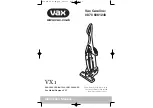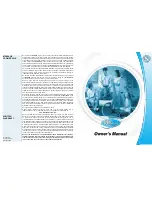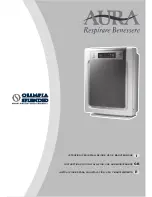
7
4 Disassembly and Assembly Instructions
Important: Always turn the vacuum cleaner’s power off before replacing components.
Remove the power cord and plug from the mains.
* Attention
(1) When disassembling the vacuum cleaner, check the connections and wiring (pulling) of each component, and ensure
that everything is restored correctly once repairs are complete.
(2) Handle all disassembled components and packing with care, and be sure to replace any components that may be acci-
dentally damaged.
(3) Once repair operations are complete, always inspect the area around the repairs for any degradation, and ensure that
all components that were removed for repair have been replaced in the correct wiring configurations. It is also necessary
to test the operation of the vacuum cleaner and ensure that it is safe for subsequent use.
• Insulation resistance:
Must be at least 5M
Ω
when a direct current of 500V is applied between the power plug terminals and the exterior of the motor.
• Dielectric strength:
Must be able to withstand 1250V of alternating current applied between the power plug terminals and the exterior of the motor for
one minute.
(4) Do not make changes to models, components, or materials during repairs and services.
(5) If a wiring unit has been supplied as a spare part, the wiring unit must be simply replaced as it is, without any addi-
tional repairs or connections made to even part of the wiring.
(6) Insert/remove the fast-on terminals by pushing/pulling them straight out without jiggling them or applying unneces-
sary force.
4.1.
Removal of Dust Cover
1. Open Dust Cover Unit and insert a slotted screwdriver
between the Dust Cover Unit and Upper Body Unit. Move
the screwdriver in the direction of the arrow and remove
the Dust Cover Unit by pulling it upward.
Fig.1
2. Disengage the four hooks of the Dust Box Plate.
Fig.2
3. Remove the Dust Box Plate, Hose Fitting Rubber, and
Suction Inlet from the Dust Cover.
Fig.3



































